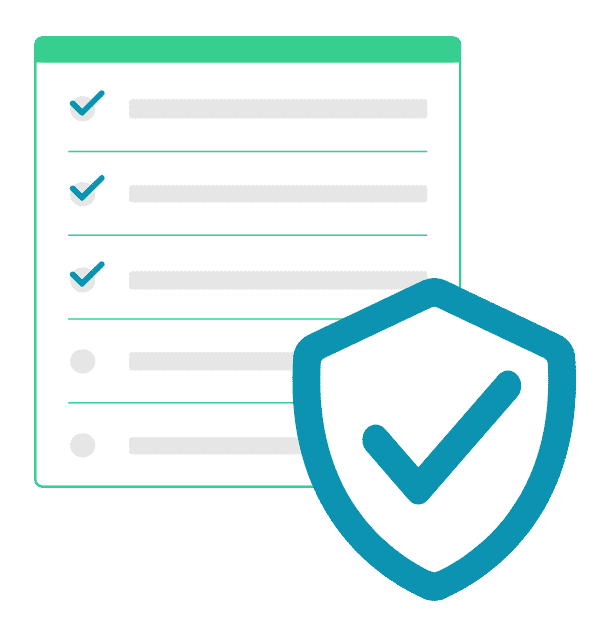While strong, complex passwords are an effective first line of defense when securing business accounts and applications, they are not fool proof and can be compromised if a hacker gains access to company systems. Two-factor authentication (2FA), also known as multi-factor authentication, serves as an extra line of defense and complicates the login process by adding an additional form of identity verification.
Cybersecurity attacks and breaches of Protected Health Information (PHI) are increasing as the tools used by hackers become more and more sophisticated. Don’t let yourself or your clients become the next target. The solution? Implement two-factor authentication.
What is two-factor authentication?
If you’re new to the world of two-factor authentication, you might be wondering how it works. Basically, two-factor authentication adds an additional layer of security to online accounts. It requires an additional login credential (beyond username and password) to access an account. For example, an application will email an additional code to you, ask you verifying questions you have previously answered, or send a text to your mobile device. In short, it makes it even more difficult for information to land in the wrong hands, and adds another layer of security.
But choosing a method can be a bit daunting. There are many forms 2FA can take, from free or paid software programs to verification through text or email. To get you started, here are a few methods of 2FA we recommend considering, and some you may want to retire.
Biometric authentication
Biometric authentication requires a user to verify that they are who they say they are via a physical characteristic — something like a fingerprint scan, or facial or voice recognition. For large organizations storing or accessing highly sensitive information, this is one of the most effective forms of 2FA. Because it is one of the most difficult to fake, biometric authentication gives your information a great chance at protection from bad actors.
Google Authenticator
Google authenticator is an easy, safe, and pretty painless option for many entities looking to implement two-factor authentication. This is a popular choice because many applications are compatible with Google Authenticator. If you’re already using Google systems, then integration will be even easier. Basically, all the user has to do is download the app and register the program they want to use. The application will generate a 6-digit code that can be input into applications to verify the user’s identity.
Zoho OneAuth
Zoho OneAuth is a comprehensive multi-factor authentication app that allows you to access all your necessary applications without compromising security. This application works similarly to Google Authenticator in that it generates a 6-digit code that the user inputs into the application.
Bluetooth or USB key
A bluetooth or USB key can be an effective physical safeguard against breaches of protected data. Rather than verifying the user’s identity through online authentication, this method requires the use of a physical security key which hackers cannot compromise through usual means. This form of authentication is recommended by the FIDO Alliance, an organization dedicated to promoting better authentication standards.
Text message verification
If downloading yet another mobile app sounds like something you or your employees would like to avoid, then text message verification may be a more suitable fit. It’s an option that utilizes an existing app, and can be easily implemented. The program will send a text to your mobile device with a one-time pin to input into the site. It’s simple and easy. However, there is a chance texts can be intercepted by bad actors. NIST does not recommend this as an authentication method.
Email verification is a simple, easily implemented form of two-factor authentication, since people often view their email accounts daily and tend to have easy access on mobile and/or desktop devices. This is, however, the least secure of the 2FA options. If your system is compromised, there is a chance hackers may have access to emails on the system which would make 2FA useless.
Backup codes
When you activate 2FA on your system, you have the option of downloading backup codes that you can use to access the system. It’s important to keep these codes in a safe place, in the event that your phone is lost or stolen. Otherwise, you won’t have access to the device that you would normally use for 2FA. These codes are like passwords, and need to be stored securely! They are best used only for emergency access.
Making the choice
Whichever two-factor authentication method you choose, it should reflect the current state of your business, your security standards, and the ways in which your employees access and secure protected data.
Discuss possible 2FA options with members of your compliance team or IT personnel. Whichever method you choose, be sure to enable it on all accounts, devices, and programs used in the course of business. Securing protected data should be a number one priority, and with two-factor authentication, that task is made easier and more effective.
Have you performed a Risk Assessment in the past year? Do you have updated HIPAA Policies and Procedures in place? Our HIPAA Prime™ program does all this and more! We create customized compliance documents and provide your staff with easy online training, ensuring compliance for your business.
Want to know more about how you can become HIPAA compliant?
Email us at info@totalhipaa.com to learn more about how we can help your organization become (and stay!) HIPAA compliant. Or, get started here.



